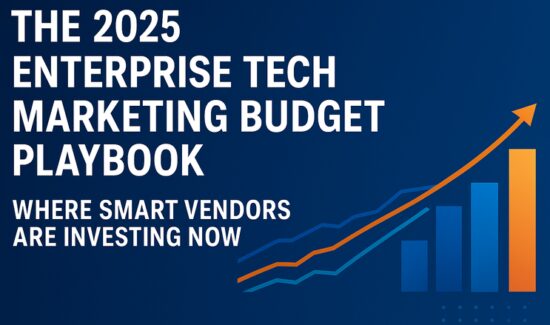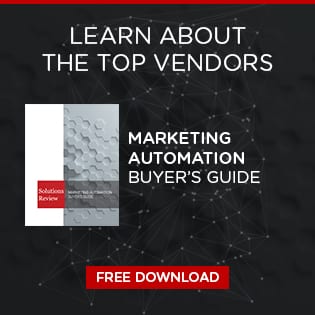How Technology Aligns Teams Around an Account-Based Marketing Strategy


As part of Solutions Review’s Contributed Content Series—a collection of articles written by industry thought leaders in maturing software categories—Bonnie Crater, the CEO and President of Full Circle Insights, explains how technology can (and should) align teams around their account-based marketing strategy.
For companies that sell products and services to other businesses, the marketing and sales teams must row in the same direction. However, the two groups often speak different business languages and operate at cross-purposes. One reason business-to-business (B2B) marketing teams are adopting account-based marketing (ABM) is the potential to achieve better alignment.
More than 90 percent of B2B marketers now use an account-based marketing strategy, though the maturity of the approach varies significantly across companies. B2B companies that adopt ABM are acknowledging the reality that selling to businesses is fundamentally different from selling to consumers (B2C). There are more decision-makers involved, and the sales cycle is typically longer, especially for complex products.
While B2C is the default model for most marketing training, visionaries in the B2B space have created concepts that more closely reflect B2B processes. An early example includes the “demand waterfall” that B2B research and advisory firm SiriusDecisions had rolled out in 2001. It described sales funnel stages and gave rise to familiar terms like “marketing qualified leads” (MQLs) and “sales qualified leads” (SQLs).
In 2021, Forrester Research (which acquired SiriusDecisions) updated the concept with the Forrester B2B Revenue Waterfall, built around ABM. The new model reflects ABM’s focus on target accounts instead of individuals. It’s a critical shift in mindset, and technology made it possible. Here’s a look at how technology-enabled ABM aligns marketing and sales teams to drive more revenue.
From Person-Based to Account-Based Marketing
The ABM concept first came on the scene in the 2010s, but it didn’t initially catch on in the way it has now due to the high levels of personalization required that weren’t practical with the technology and data-gathering capabilities of that time. ABM targets buying group members and ideally deliver content tailored to their buyer journey, which is impossible to scale without reliable data on buyer intent.
Intent data providers like 6sense, Bombora, and Demandbase provide the insights ABM teams need to personalize outreach, which plays a significant role in the current surge toward ABM. However, ABM programs need additional technology solutions to reach a mature state, including technology that can track campaign performance and measure results on the system of record that is credible to both marketing and sales: the company’s CRM instance.
For marketers new to ABM, the Forrester B2B Revenue Waterfall is a great framework for tracking and measuring ABM campaigns, so it’s crucial to understand how it works and access enabling technology via the CRM. Marketers who are transitioning from a person-based demand waterfall to the Forrester B2B Revenue Waterfall can map funnel stages across the models (e.g., “prioritized” in the Forrester framework is roughly equivalent to “MQL” in the demand waterfall).
It’s also important to note that the Forrester framework reflects the reality that sales opportunities consist of more than new account acquisition; there are also retention, upsell, and cross-sell opportunities to monitor. Intent data drives activities in the “detected” stage of the revenue waterfall so marketers can deliver targeted campaigns that meet buyers where they are on the journey toward a purchase.
In the ABM model, the marketer’s primary job is to activate accounts, using campaigns to move buying group members down the funnel with hyper-segmented content. Marketers manage campaigns from the “detected” stage to “prioritized,” and then sales takes over to follow up on inbound leads, which often arrive in the form of content download forms and demo requests. With ABM, marketers can also run special campaigns to accelerate sales later in the funnel, allowing sales teams to get an early peek at companies in the detected stage and execute strategic outbound campaigns.
Closely Aligning Marketing and Sales Drives Revenue
When companies put enabling technology in place on the CRM, B2B marketers can adopt an ABM strategy and refine it to levels of maturity that consistently and efficiently drive revenue. Collaboration plays a huge role; in an ABM scenario, marketing and sales select target accounts as a team and ideally meet frequently to review data as campaigns move buying group members through the funnel.
Thanks to intent data, automation, and other technologies, marketing teams can scale personalization and closely monitor results through a revenue funnel that more accurately reflects the way B2B companies sell. Buying groups comprise individuals looking to solve business problems, and ABM gives marketers a framework that allows the selling company to deliver the information and supporting material needed to drive more revenue.
IT and Sales Ops can play a role by supporting the marketing and sales teams as they deploy new solutions on the CRM to support their account-based marketing strategy. The rate of ABM adoption has soared over the past few years, but many marketing teams are still struggling with the transition. With the right data and technology, marketing and sales will be more closely aligned and better positioned to drive revenue.




















